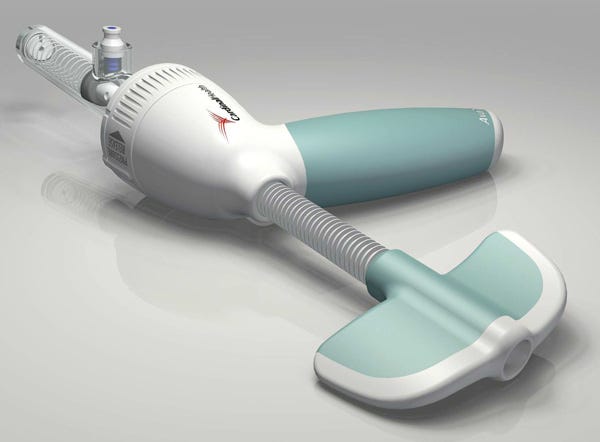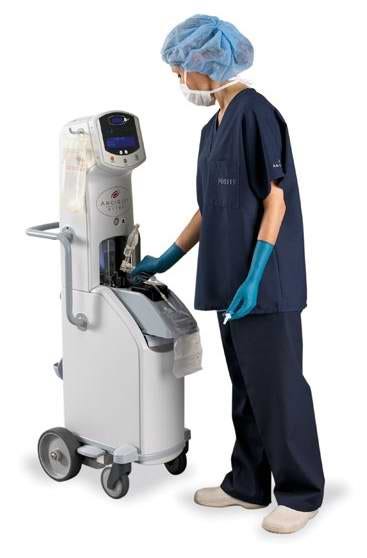How to Win Friends and Influence Medical Device Burden
March 16, 2015
Designing a device to meet the needs of all of the key stakeholders involved in the healthcare ecosystem always results in some trade-offs.
Brian Buntz
Every activity in healthcare, from performing a surgery to self-administering an injection, requires a series of actions to be performed, says Craig Scherer, co-founder and senior partner of Insight Product Development (Chicago). "We refer to this sequence as a workflow. Devices that are used to enable treatment require some level of activity to use them within this workflow."
|
Craig Scherer is a senior partner and cofounder of Insight Product Development. Scherer will speak on designing user-centric medical devices on May 6 at BIOMEdevice Boston. |
Such work is known as "burden." "As device developers, we often allocate this burden to the user, meaning that most of the work is performed by them in multiple steps or activities," Scherer explains. By contrast, designers can also decide that it is best to burden the device, which can lead to the development of some level of automation to streamline the number of interactions required of the user.
"If we take this notion one step further and decide to simplify the device, then more of the work falls on the shoulders of the user," Scherer explains. "However, in any healthcare delivery model, there are many stakeholders that may interact with the devices and environments in which they are used. This group of users may have a wide variety of backgrounds, training levels, demands on their time, and other specific limitations," he adds.
In the following Q&A, Scherer discusses how to understand how your medical device burdens various stakeholders and how to successfully allocate burden across the devices themselves and across the multiple groups of individuals that use them.
Qmed: What kinds of consequences could result from ignoring elements that burden users in unforeseen ways?
Scherer: One classic unforeseen burden on the user is that of the latency effect. When a user is trained on a device but the interval between use cycles is long--sometimes days or even weeks--there is a great deal of burden placed on the user to remember what might be a complex set-up procedure. In this type of case, it would be wise to automate the setup, or even provide tools like an onboard video help library.
Qmed: At what point in the device development process should you start thinking about the distribution of burden?
The distribution of burden is really about balancing a set of stakeholder's capabilities and capacities with each other and with device complexity. This process begins during ethnographic research. It is here we really start to understand each stakeholder, their training, their role within each workflow, and their attributes like physical limitations and even emotional states. We are also cataloging environmental influences in order to systemically understand how they can be burdened and still be successful at all of their tasks.
Also early in the process, we need to understand the overall goals of the program such as price points, reimbursement codes, and product durability issues. Even if the use cases suggest that the interaction should be very simple, it is not always possible to completely burden the device. Not only is it more costly to automate subassemblies within a device, but the higher complexity also carries a higher risk for potential failure.
|
Work flow map. Click image to expand. |
Qmed: How do you identify which technology features are required and which aren't?
Scherer: Once developers begin to understand the stakeholder group and overall project goals, the appropriate evaluation criteria to make technology application decisions becomes clear. It is important to think of technology not as the device itself but instead as an enabler to users and to the functionality of the device. It is necessary to establish the capability of the user group, which will in turn indicate the level of automation required to accomplish the set of tasks. As the device is being developed, the attractiveness of any technology needs to be evaluated across issues like production scalability, cost of acquisition, and supply-chain availability.
Qmed: What do you recommend when stakeholders have conflicting goals?
Scherer: Virtually every program presents some level of conflicting goals between stakeholders. As device developers we have to always be cognizant of tradeoffs that would cause safety or efficacy issues. We can perform a Use Failure Mode and Effects Analysis (UFMEA) to help determine what use cases present risks with the most negative impact.
If there are conflicting goals around attributes such as efficiency, comfort, and other usability issues, it's always good practice to try and find the lowest common denominator and design to it--tending to the basic needs of each user group. After that, it is really about establishing primary users and secondary users, and then designing for the primary-use case.
Qmed: How do those conflicts inform the design process?
Scherer: When conflicts between stakeholders arise, it's always a good idea to address them in the evaluative research phase. The team can develop various options and hypotheticals, testing them with all stakeholders to determine the best tradeoffs to make. This informs the design team's rationale for each design input.
Qmed: How do you identify which users should be saddled with the least or most burden?
Scherer: It's not so much a question of the most or least burden; it's more about balancing the burden of each user and determining the appropriate level of complexity of the device. Ethnographic research as well as preference and usability testing with multiple user groups will almost always give a clear indication of this distribution. Understanding the capability and capacity of each distinct user group and then evaluating the effects that a more automated solution will have on areas like cost, efficiency, robustness, and safety will result in a solution that drives the appropriate allocation across all users.
Qmed: How does the product type influence the distribution of burden? (I would imagine that a device designed primarily for a surgeon would be dramatically different from a burden standpoint as one designed for a patient or a caregiver.)
Scherer: Surgical hand tools are a great example of this. In virtually every surgical tool that we have developed, the key for any new device was to not take away "feel" from the surgeon. When a new device is developed, they may like the innovation in terms of what they accomplish, but they never want to lose the manual feel of the device. They want to control speed, pressure and other physical parameters. This usually means that the need to automate the device is usually very small.
Conversely, if you are dealing with a less skilled group like a family caregiver, then the example of the auto injector fills this need very well.
It is also important to look at outside influences across product categories. Our healthcare system has been experiencing a nursing shortage for quite some time. This would indicate that the average nurse experience level is lower than in years past and nurses are likely overtaxed with responsibilities. This would be the type of case where the devices that they deal with on a daily basis need to be simple for them to use. Examples include EMR interfaces and critical care monitors.
The other thing to remember is that device automation often comes at a price. It can be a drain on reliability and can cost a great deal. Effectively balancing this complexity with user capability is important.
Qmed: What specific market examples can you point to that appropriately allocated burden to achieve widespread device adoption / market success?
Scherer: Three come to mind: First of all, the Alyx blood collection system from Fenwal is a great example of balancing user capability with device complexity. This MDEA gold-winning portable system is used for blood drives and to separate components during the donation process. This highly complex machine is used by unskilled technicians with about 3 weeks of phlebotomy training. Featuring a user interface specifically designed for these technicians who are managing multiple donations, it requires the operator to complete each task before additional options are presented. The device uses a completely linear approach, coupled with an exclusively icon-based graphical layout and input format. In addition, its input format requires no decisions and allows no deviations to the prescribed operation, ensuring automated efficiency and safety.
Surgeons are typically most effective when "touch" and "feel" is literally left in their hands. The second example is the Carefusion AVAmax Plus, which was designed to offer this "touch-and-feel" feature. The device delivers bone cement to the vertebrae. It is a great case where there were two distinct user groups of the device in the same surgery. The scrub nurse would mix the cement and load and assemble the device, and the surgeon would deliver it into the patient. The mixing and prep was very messy and inexact based on human variation. This posed a clear opportunity to automate the set up using a closed loop disposable and an automated mixer. Several concepts were presented to surgeons that would help them deliver with a controlled and consistent force and pace. They unilaterally said "No! I need to feel the pressure as feedback and be able to modify it myself, based on variations in the cases' physiology." The final design gave surgeons the option to screw in the plunger or plunge like a syringe, while also having a touch button release to back off the pressure when needed based on their feel.
|
The Carefusion AVAmax Plus was designed to offer surgeons a specific "touch-and-feel." |
The final example, Bayer's Angiojet Ultra was a second-generation thrombectomy drive system used in neurosurgery. Extensive ethnographic research showed that the set-up for this cart-based product was not only complex and inefficient, but also stole valuable time away from the surgical nursing staff to ready the neurosurgery suite for the next case. After extensive electromechanical risk and technology assessment activities--with highly skilled primary operators, it was still clear that most of the burden should be placed on the device, largely due to efficiency and time allocation. The tube set and disposable drive system were redesigned, and the loading and priming were fully automated, turning an eight-step setup process into three in a fraction of the time.
|
The Bayer Angiojet Ultra was redesigned to place more burden on the device. |
Hear Insight Product Development founder Craig Scherer and his colleague Sean Corrigan, director of engineering, speak on designing user-centric medical devices on May 6 at BIOMEdevice Boston. |
Like what you're reading? Subscribe to our daily e-newsletter.
About the Author(s)
You May Also Like






